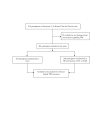Effect of Housing First on violence-related traumatic brain injury in adults with experiences of homelessness and mental illness: findings from the At Home/Chez Soi randomised trial, Toronto site
- PMID: 33277277
- PMCID: PMC7722391
- DOI: 10.1136/bmjopen-2020-038443
Effect of Housing First on violence-related traumatic brain injury in adults with experiences of homelessness and mental illness: findings from the At Home/Chez Soi randomised trial, Toronto site
Abstract
Objectives: People experiencing homelessness have a high prevalence and incidence of traumatic brain injury (TBI) due to violence. Little is known about the effectiveness of interventions to reduce TBI in this population. This study assessed the effect of Housing First (HF) on violence-related TBI in adults with experiences of homelessness and mental illness.
Design: Pragmatic randomised trial.
Participants: 381 participants in the Toronto site of the At Home/Chez randomised trial.
Intervention: HF participants were provided with scattered-site housing using rent supplements and supports from assertive community treatment or intensive case management teams (n=218, 57.2%). Control participants had access to treatment as usual (TAU) in the community (n=163, 42.8%).
Main outcome measures: Primary outcomes were an incident physical violence-related TBI event and the number of physical violence-related TBI events during the follow-up period (January 2014 to March 2017). Interval-censored survival time regression and zero-inflated negative binomial regression were used to assess the effect of HF on primary outcomes.
Results: Among study participants, 9.2% (n=35) had an incident physical violence-related TBI event, and the mean physical violence-related TBI events was 0.16 (SD ±0.6). Compared with TAU participants, HF participants did not have a significantly lower risk of an incident violence-related TBI event (adjusted HR : 0.58 (95% CI, 0.29 to 1.14)), but they had a significantly lower number of physical violence-related TBI events (unadjusted incidence rate ratio (IRR): 0.22 (95% CI, 0.06 to 0.78); adjusted IRR: 0.15 (95% CI, 0.05 to 0.48)).
Conclusion: HF may be a useful intervention to reduce the burden of TBI due to physical violence among homeless individuals with mental illness.
Trial registration number: ISRCTN42520374.
Keywords: adult psychiatry; mental health; preventive medicine; public health; social medicine.
© Author(s) (or their employer(s)) 2020. Re-use permitted under CC BY-NC. No commercial re-use. See rights and permissions. Published by BMJ.
Conflict of interest statement
Competing interests: None declared.
Figures


Similar articles
-
Long-term effects of rent supplements and mental health support services on housing and health outcomes of homeless adults with mental illness: extension study of the At Home/Chez Soi randomised controlled trial.Lancet Psychiatry. 2019 Nov;6(11):915-925. doi: 10.1016/S2215-0366(19)30371-2. Epub 2019 Oct 7. Lancet Psychiatry. 2019. PMID: 31601530 Clinical Trial.
-
Cost-effectiveness of Housing First Intervention With Intensive Case Management Compared With Treatment as Usual for Homeless Adults With Mental Illness: Secondary Analysis of a Randomized Clinical Trial.JAMA Netw Open. 2019 Aug 2;2(8):e199782. doi: 10.1001/jamanetworkopen.2019.9782. JAMA Netw Open. 2019. PMID: 31433483 Free PMC article. Clinical Trial.
-
The Long-Term Effects of a Housing First Intervention on Primary Care and Non-Primary Care Physician Visits Among Homeless Adults with Mental Illness: A 7-Year RCT Follow-Up.J Prim Care Community Health. 2021 Jan-Dec;12:21501327211027102. doi: 10.1177/21501327211027102. J Prim Care Community Health. 2021. PMID: 34238042 Free PMC article. Clinical Trial.
-
Housing First for People With Severe Mental Illness Who Are Homeless: A Review of the Research and Findings From the At Home-Chez soi Demonstration Project.Can J Psychiatry. 2015 Nov;60(11):467-74. doi: 10.1177/070674371506001102. Can J Psychiatry. 2015. PMID: 26720504 Free PMC article. Review.
-
Traumatic brain injury in homeless and marginally housed individuals: a systematic review and meta-analysis.Lancet Public Health. 2020 Jan;5(1):e19-e32. doi: 10.1016/S2468-2667(19)30188-4. Epub 2019 Dec 2. Lancet Public Health. 2020. PMID: 31806487
Cited by
-
Exploring the effect of case management in homelessness per components: A systematic review of effectiveness and implementation, with meta-analysis and thematic synthesis.Campbell Syst Rev. 2023 May 17;19(2):e1329. doi: 10.1002/cl2.1329. eCollection 2023 Jun. Campbell Syst Rev. 2023. PMID: 37206622 Free PMC article. Review.
-
Managing high-risk behaviours and challenges to prevent housing loss in permanent supportive housing: a rapid review.Harm Reduct J. 2023 Sep 29;20(1):140. doi: 10.1186/s12954-023-00873-z. Harm Reduct J. 2023. PMID: 37775776 Free PMC article. Review.
-
Health Determinants among North Americans Experiencing Homelessness and Traumatic Brain Injury: A Scoping Review.Neurotrauma Rep. 2021 Aug 16;2(1):303-321. doi: 10.1089/neur.2021.0010. eCollection 2021. Neurotrauma Rep. 2021. PMID: 34901934 Free PMC article.
-
Targeted interventions to improve the social and economic circumstances of people with mental ill-health from marginalised communities: a systematic review.Psychol Med. 2025 Jul 28;55:e217. doi: 10.1017/S0033291725101128. Psychol Med. 2025. PMID: 40717551 Free PMC article.
-
Exploring and Mapping Screening Tools for Cognitive Impairment and Traumatic Brain Injury in the Homelessness Context: A Scoping Review.Int J Environ Res Public Health. 2023 Feb 15;20(4):3440. doi: 10.3390/ijerph20043440. Int J Environ Res Public Health. 2023. PMID: 36834133 Free PMC article.
References
Publication types
MeSH terms
Grants and funding
LinkOut - more resources
Full Text Sources
Medical
Research Materials
Miscellaneous
